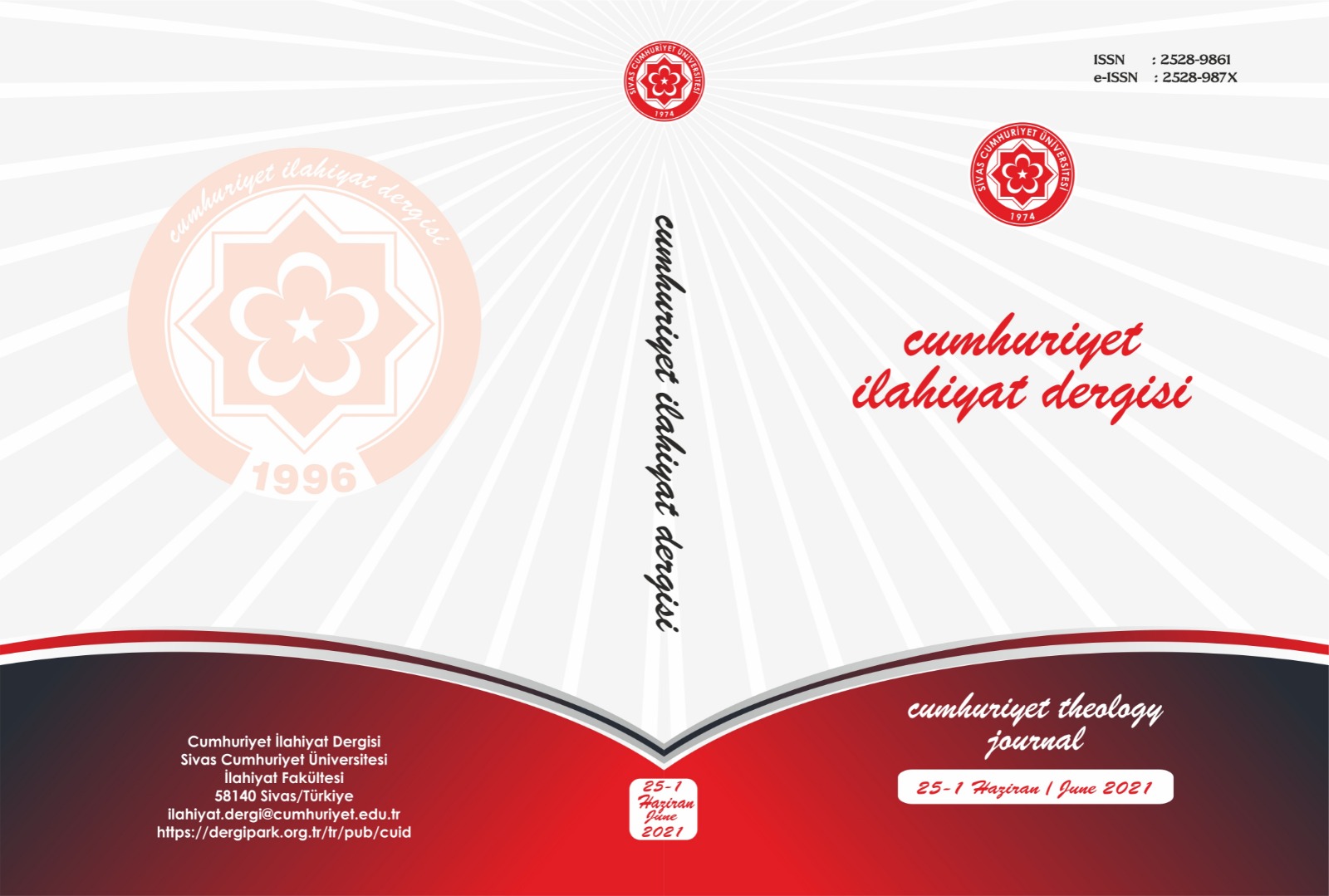Mahdī with Black Banners: A close look at the Akhbār al-ʿAbbās from the Perspective of Mahdī Belief
Siyah Sancaklı Mehdî: Mehdî İnancı Perspektifinden Ahbâru’l-Abbâs’a Yakından Bakış
Author(s): Öznur ÖzdemirSubject(s): Theology and Religion
Published by: Cumhuriyet Üniversitesi İlahyat Fakültesi
Keywords: Islamic History; ʿAbbāsid Revolution; Mahdī Belief; Black Banners; Akhbār al-ʿAbbās;
Summary/Abstract: The Mahdī belief had reappeared during the ʿAbbāsid Revolution as a provocative force for the masses not long after its spread in Islamic society. For this reason, in many studies on the revolution, how and in what way this belief was utilized have been discussed. The ʿAbbāsids exploited expectation of saviour, which was identified as the Mahdī belief, to legitimize themselves in the caliphate even after the revolution succeeded. Thus, in the Akhbār al-ʿAbbās, which is considered the semi-official history of the ʿAbbāsid Revolution, there are many riwāyas emphasizing that the ʿAbbāsids are the expected saviours. Akhbār al-ʿAbbās is an anonymous manuscript which provides essential information about the revolution and therefore probably had been written by someone close to the ʿAbbāsid family. After the publication by ʿAbd al-Aziz Dūrī and A. J. al-Muttalibī in 1971, the manuscript became known as Akhbār al-ʿAbbās, and Akhbār in short. There are many riwāyas in this source which emphasize that the ʿAbbāsids are the expected saviours. These riwāyas are mostly presented with narratives about the appearance of black banners. Although the riwāyas in the manuscript have been discussed to shed light on various aspects of the revolution in the studies which investigate or reference this source, there is no study emphasizing that there is a direct relationship between these riwāyas and Mahdi belief. Moreover, the riwāyas in the source have not been examined in detail. There are two topics which need to be focused on when reviewing the literature. Of these two, the more important is the Akhbār. Studies on this newly discovered source have been about the ʿAbbāsid Revolution and, recently, on the historiographical value and authenticity of the source. The other focus of these studies is the Mahdī belief and its importance for the revolution, which has been studied for more than a century. Gerlof Van Vloten’s book can be regarded as the primary work to reveal some important challenges for the Mahdī belief and its effect on the ʿAbbāsid Revolution. However, Van Vloten did not refer to Akhbār because the manuscript had not been discovered yet when he published his study at the end of the 19th century. This article was written to discuss the influence of the Mahdī (saviour or deliverer) belief in the ʿAbbāsid Revolution through riwāyas on black banners. It points out the riwāyas of the black banners in the Akhbār by associating them with the Mahdī belief. For this reason, the title “Mahdī with Black Banners” was chosen for this article. Modern historians believe that this belief had become widespread in the Islamic society gradually and thus was influential in the ʿAbbāsid movement; however, the available sources were not enough to support this claim sufficiently. In this study, firstly the Mahdī belief will be explained. Then the importance of Mahdī belief during the ʿAbbāsid movement will be discussed. And finally, the riwāyas related to this belief in the Akhbār will be examined in more detail compared to the similar studies. In conclusion, the article argues that despite the minority of the direct riwāyas on the Mahdī belief, there are many riwāyas in Akhbār about the black banners. Thus, it can be said that the ʿAbbāsids took advantage of Mahdī belief for the success of the revolution and to gain legitimacy afterwards. However, this belief was not only Mahdī but Mahdī with a black banner.
Journal: Cumhuriyet İlahiyat Dergisi
- Issue Year: 25/2021
- Issue No: 1
- Page Range: 157-171
- Page Count: 15
- Language: English

